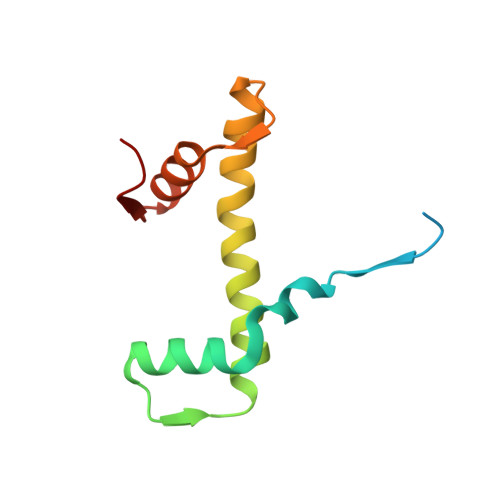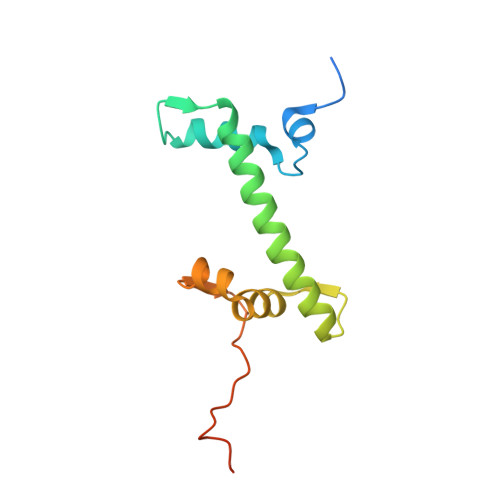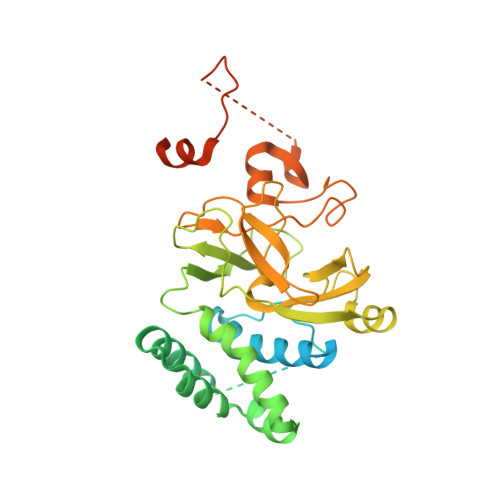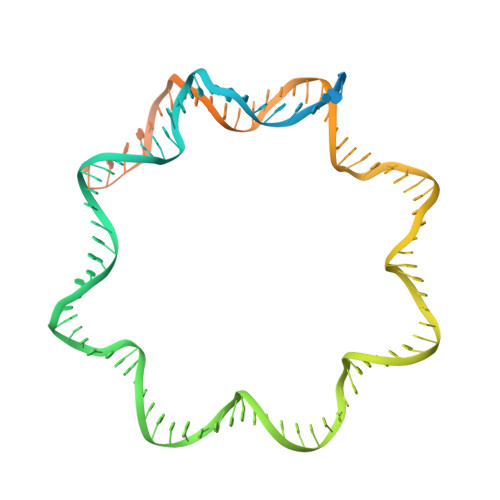Catalytic and non-catalytic mechanisms of histone H4 lysine 20 methyltransferase SUV420H1.
Abini-Agbomson, S., Gretarsson, K., Shih, R.M., Hsieh, L., Lou, T., De Ioannes, P., Vasilyev, N., Lee, R., Wang, M., Simon, M., Armache, J.P., Nudler, E., Narlikar, G., Liu, S., Lu, C., Armache, K.J.(2023) bioRxiv
- PubMed: 36993485
- DOI: https://doi.org/10.1101/2023.03.17.533220
- Primary Citation of Related Structures:
8T9H - PubMed Abstract:
The intricate regulation of chromatin plays a key role in controlling genome architecture and accessibility. Histone lysine methyltransferases regulate chromatin by catalyzing the methylation of specific histone residues but are also hypothesized to have equally important non-catalytic roles. SUV420H1 di- and tri-methylates histone H4 lysine 20 (H4K20me2/me3) and plays crucial roles in DNA replication, repair, and heterochromatin formation, and is dysregulated in several cancers. Many of these processes were linked to its catalytic activity. However, deletion and inhibition of SUV420H1 have shown distinct phenotypes suggesting the enzyme likely has uncharacterized non-catalytic activities. To characterize the catalytic and non-catalytic mechanisms SUV420H1 uses to modify chromatin, we determined cryo- EM structures of SUV420H1 complexes with nucleosomes containing histone H2A or its variant H2A.Z. Our structural, biochemical, biophysical, and cellular analyses reveal how both SUV420H1 recognizes its substrate and H2A.Z stimulates its activity, and show that SUV420H1 binding to nucleosomes causes a dramatic detachment of nucleosomal DNA from histone octamer. We hypothesize that this detachment increases DNA accessibility to large macromolecular complexes, a prerequisite for DNA replication and repair. We also show that SUV420H1 can promote chromatin condensates, another non-catalytic role that we speculate is needed for its heterochromatin functions. Together, our studies uncover and characterize the catalytic and non-catalytic mechanisms of SUV420H1, a key histone methyltransferase that plays an essential role in genomic stability.
Organizational Affiliation:
Department of Biochemistry and Molecular Pharmacology, New York University Grossman School of Medicine, New York, NY, USA.




















